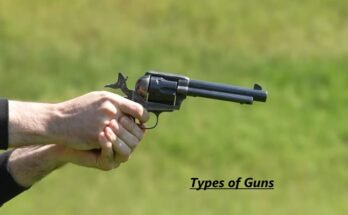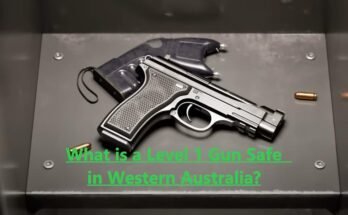Did you know that a bullet can get as hot as 900 degrees Fahrenheit the moment it leaves the barrel? That intense heat is generated in the blink of an eye, thanks to the rapid expansion of gas that pushes the bullet forward.
Whether you’re a firearms enthusiast or just curious about the science behind ballistics, understanding what happens when a bullet is fired is both fascinating and important. As the trigger is pulled, a controlled explosion ignites the gunpowder inside the cartridge. This powerful reaction creates a burst of gas that launches the bullet down the barrel at high speed—generating a lot of heat through friction and combustion along the way.
This extreme temperature isn’t just a cool fact—it has real implications for firearm safety and performance. Knowing how and why a bullet heats up helps shooters make smarter choices about maintenance, materials, and technique. It’s one of those behind-the-scenes details that adds depth to our understanding of how firearms work and how to use them safely and effectively.
The Physics Behind Bullets
Understanding the physics behind bullets unravels the captivating transformation of potential energy into kinetic force. This transition is not just about speed but also includes the thermal dynamics as a bullet gets fired. The heat generated is a byproduct of the energy conversion taking place in mere milliseconds.
Energy Conversion In Firing
When a gun fires, a fascinating energy transfer occurs. A primer ignites the powder within the bullet casing. This ignition transforms chemical energy into intense heat and expansive gases. The rapid expansion propels the bullet through the barrel with great force, it exits at high speed, and it’s hot due to the energy conversion.
- Chemical energy in the gunpowder turns into
- Thermal energy (heat)
- Mechanical energy as the bullet accelerates
Factors Influencing Bullet Temperature
Varying conditions can significantly affect the temperature of a bullet on firing. Some factors include:
| Type of firearm | Type of ammunition | Barrel length | Rate of fire |
|---|---|---|---|
| Higher caliber guns usually produce hotter bullets. | Different powder types and bullet designs impact heat generation. | Longer barrels allow more energy conversion, increasing temperature. | Rapid firing can lead to elevated bullet and barrel temperatures. |
Environmental factors like air temperature and humidity also play roles. A bullet in cold conditions may be slightly cooler than one fired in the heat. Bullets traveling through resistant mediums, like water, can also cool down more quickly.
Measuring The Heat
Have you ever wondered just how hot a bullet gets when fired from a gun? The temperature of a bullet as it speeds through the barrel is fascinating.
The energy from the firing pin ignites gunpowder. This creates an explosion. The bullet heats up quickly.
Technology For Temperature Recording
To capture a bullet’s temperature, experts use high-tech tools. These include infrared cameras and thermal sensors.
- Infrared cameras detect heat without touching the bullet.
- Thermal sensors attach to the gun barrel. They measure heat as bullets pass by.
These methods ensure accurate and safe temperature recording without altering the bullet’s flight.
Experimental Findings On Bullet Temperatures
Scientists have conducted experiments to measure bullet heat.
| Bullet Type | Temperature Range |
|---|---|
| Handgun | 150-250°C |
| Rifle | 170-300°C |
| Automatic Weapons | 200-400°C |
The results show that temperatures can vary a lot. Differences depend on the type of gun and bullet used.
Effects Of Heat On Bullet Performance
Understanding how heat affects bullet performance is paramount for shooting accuracy. A fired bullet can reach blistering temperatures, influencing its behavior from barrel to target. Let’s delve into how temperature changes can impact the path and integrity of a bullet.
Velocity And Trajectory Considerations
The heat generated upon firing accelerates the bullet to high speeds. High temperatures cause the air to become less dense, affecting bullet travel. This results in changes to both velocity and trajectory.
- Heated bullets travel faster due to lowered air resistance.
- Heat-induced expansion can alter the bullet’s path, potentially reducing accuracy.
- The barrel’s temperature can also affect the initial bullet speed.
Material And Design Resilience
Bullets must withstand intense heat without compromising structure. The materials and design play crucial roles in this resilience.
| Material | Properties |
|---|---|
| Copper | Handles high temperatures well, maintaining shape |
| Lead | Softer, may deform under extreme heat |
| Steel | Durable, but can affect barrel wear over time |
Bullets are designed to cope with thermal expansion. Precise engineering ensures functionality remains consistent.
- Heat-tolerant designs are crucial for consistent performance.
- Advancements in bullet coatings can reduce friction-related heat effects.
Safety Protocols For Handling Firearms
The enchantment of firearms often overshadows their inherent risks.
Familiarity with safety protocols is a must before engaging the trigger.
Best Practices In Firearm Use
Ensuring responsible firearm handling is critical.
- Treat every gun as loaded.
- Point the muzzle in a safe direction at all times.
- Keep your finger off the trigger until ready to shoot.
- Be aware of what’s beyond your target.
- Use proper eye and ear protection.
Assessing Risks Of Burns And Preventive Measures
Bullets get hot when fired.
User safety must be a priority.
| Assessment | Preventive Measures |
|---|---|
| High temperature of casings | Wear gloves, avoid bare skin contact |
| Risk of burns post-firing | Allow time for cooling down |
| Contact with hot muzzle | Keep at safe distance, be mindful |
Follow the protocols.
Stay vigilant.
Secure your safety and others around you.
Real-life Scenarios
Exploring real-life scenarios that involve the firing of bullets provides a vivid depiction of the immense heat generated during the process. With each trigger pull, a sequence of physical reactions culminate in the intense thermal energy that propels the bullet forward. This section delves into actual instances, meticulously examining the science in action.
Case Studies Of Firearm Discharge
One can better understand firearm dynamics by analyzing case studies. Instances consistently show that bullets can reach temperatures of 200-400 degrees Celsius upon exit. These temperatures are high enough to cause instant burns upon contact with skin.
- Law enforcement reports confirm the brief, yet high temperatures during gunfights.
- Ballistic research underscores the effects of heat on bullet trajectory and performance.
- Recreational shooting events demonstrate how barrel heat can affect accuracy and safety.
Temperature-related Malfunctions And Accidents
High temperatures in firearms can lead to dangerous situations. Mechanical failures often stem from overheated components.
| Issue | Cause | Effect |
|---|---|---|
| Ammo cook-off | Excessive heat | Unintended discharge |
| Barrel warping | Sustained firing | Reduced accuracy |
| Wear and tear | Heat over time | Shortened equipment lifespan |
For instance, an overheated firearm once malfunctioned during a rigorous training session, leading to an accidental discharge. Thankfully, no injuries were reported. In another event, a hunter experienced barrel warp after multiple rounds, affecting shot precision.
Frequently Asked Questions On How Hot Is A Bullet When Fired?
How Hot Does A Bullet Get?
A bullet can reach temperatures up to 600 degrees Fahrenheit when fired. The friction from the gun barrel and the rapid combustion of the gunpowder contribute to this intense heat.
What Factors Affect A Bullet’s Temperature?
The bullet’s temperature can be influenced by the type of gunpowder, the bullet’s velocity, and the firearm’s barrel length. High-velocity rounds and longer barrels typically result in higher bullet temperatures.
Can A Fired Bullet Cause Burns?
Yes, if a bullet passes closely enough, it can cause burns upon firing. This is due to the high temperatures bullets can reach, which can be sufficient to burn skin or other materials upon contact.
Does Bullet Caliber Impact Temperature?
Larger calibers generally produce more heat due to greater powder loads and expansive kinetic energy. This means that a bullet’s caliber can substantially impact its temperature upon firing.
Conclusion
Understanding the temperature of a bullet post-firing is intriguing and vital for safety. Typically, bullets can reach scorching temperatures, varying with caliber and gunpowder. Firearm enthusiasts and professionals should always handle them with caution post-discharge. Keep these insights handy for your next trip to the range — knowledge ensures a safer shooting experience.



